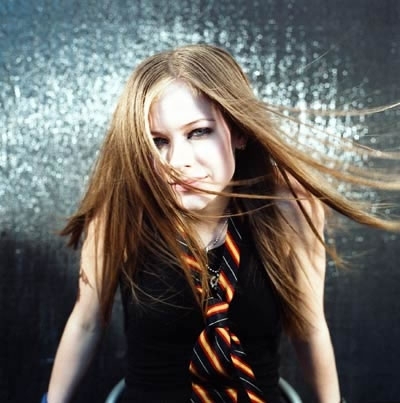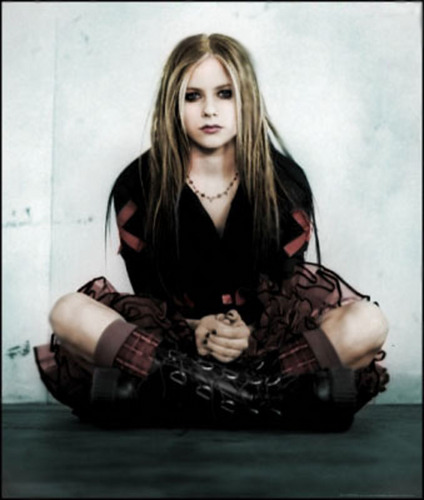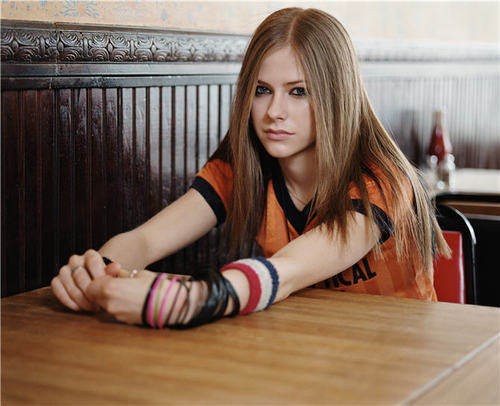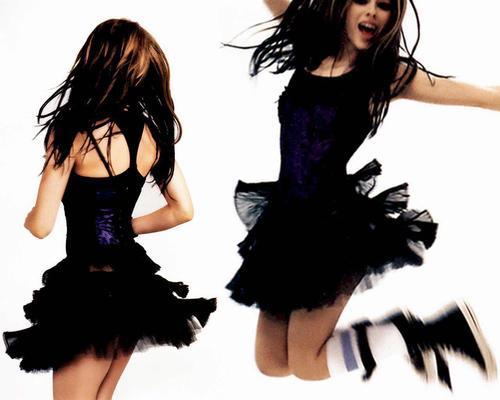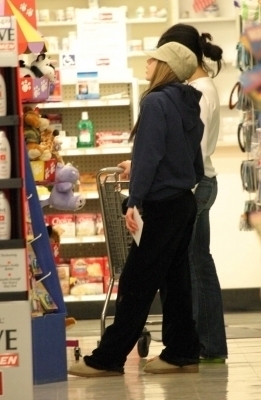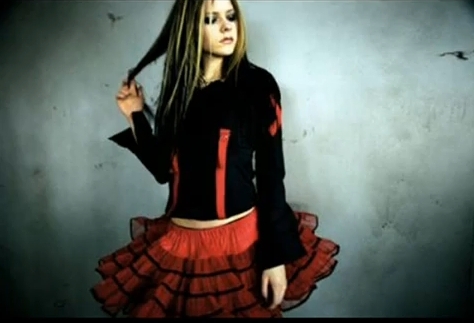If u haven't read any of these (or only read a few), well, u should because they're great.
*Warning: Parental Advisory and Teenage Content below. Children, go back to playing with your Justine bever, beaver dolls.*
(Note: This is not in order, I just couldn't rank them! :)
1.) So Lyrical door Trish Cook
What it's about: A hilarious, endearing debut about a teenage girl's quest to find her long-lost father, who just may be a rock star...
Trace lives slaan, smack in the middle of picture-perfect suburban Winnetka, Illinois. But her life is anything but cookie-cutter normal. Her mom, Bebe, is a zillion years younger than the other mothers, still dresses like a teenager, and drives around town cranking time-warped tunes-not to mention the fact that she can't seem to forget that crazy summer she spent following the big-hair bands of the 1980s. She's held onto the mementos, the music, the memories...everything, except Trace's dad.
Trace can't help but wonder which outdated rocker in the autographed foto's covering their walls might be her father. And that's not the only thing making her head spin like Bebe's old records. She's trying to keep her best friend from going off the deep end. She's desperate to do well in school. And then there's the hunky lead singer she's trying to snag-without following in her mother's footsteps.
2.) Cut door Patricia McCormick:
What it's about: The main character, Callie, is placed in a mental institution after her parents discover she has been cutting herself. At first, she keeps her distance from everyone, and isn't cooperative in therapy. When a cutting incident suddenly frightens her, she begins to explore the reasons that drove her cut herself in the first place, and she has to decide whether she wants to get better of not.
3.) I Don't Want To Be Crazy door Samantha Schultz:
What it's about: Grade 9 Up—In this "memoir in verse," Schutz comes to terms with an anxiety disorder that surfaced and plagued her throughout and after her college years. Readers accompany the auteur from the summer after high school, through college, on a semester abroad in Paris, and into her first job after graduation. Typical early-adulthood issues such as boyfriends, sex, drinking, grades, and family are woven throughout her struggle with physically and mentally debilitating panic attacks. The auteur had the courage and wisdom to seek professional help and embarked on a long and often bumpy road to treating her disorder. The decision to write in verse proves fitting; in the scenes in which a panic attack is approaching, for example, the short lines of text echo the breathless terror described within. Though the book begins to feel repetitive toward its conclusion, the repetition simultaneously reflects the cyclical nature of Schutz's disorder and one's college years. Aptly, the book ends without absolute closure, and while luckily not all teens will find themselves in identical situations, many young people transitioning to adulthood will find a part of themselves in this overwhelming, and seemingly never-ending, zoek for self-identity.—Jill Heritage Maza, Greenwich High School, CT
Copyright © Reed Business Information, a division of Reed Elsevier Inc. All rights reserved.
4.) Beautiful door Amy Reed:
What it's about: Grade 9 Up—Thirteen-year-old Cassie has bloomed. Following her family's verplaats from an island off the coast of Washington to a Seattle suburb, she has a new attractiveness that earns her the moniker "the beautiful seventh grader." Her good looks and willingness to conform are a passport to her school's powerful clique of druggies led door Alex, a frightening but charismatic fellow seventh grader who adopts Cassie as her best friend. Cassie's compliance with Alex's demands—to burn photographs of former friends, to take acid, to have sex—secures her a position as Alex's seconde in command but threatens her health and safety. When Alex's half sister Sarah moves in with Alex and her wasted mother, Cassie finds her allegiance shifting from her best friend to Sarah. Reed's first novel owes a tremendous debt to Catherine Hardwicke's 2002 film Thirteen; however, where the filmic treatment of its 13-year-old heroines' dangerous experimentation is complicated door the richness of their characters and their interactions with one another and the supporting cast, this novel is less complex and meer sensational. It is difficult to discern motivation for many of the characters, whose actions—Alex's in particular—are explained in almost clichéd form, and the secondary characters are one-dimensional.—Amy S. Pattee, Simmons College, Boston
Copyright © Reed Business Information, a division of Reed Elsevier Inc. All rights reserved.
5.) Go Ask Alice- auteur Unknown:
What it's about: The torture and hell of adolescence has rarely been captured as clearly as it is in this classic diary door an anonymous, addicted teen. Lonely, awkward, and under extreme pressure from her "perfect" parents, "Anonymous" swings madly between optimism and despair. When one of her new vrienden spikes her drink with LSD, this diarist begins a frightening journey into darkness. The drugs take the edge off her loneliness and self-hate, but they also turn her life into a nightmare of exalting highs and excruciating lows. Although there is still some vraag as to whether this diary is real of fictional, there is no vraag that it has made a profound impact on millions of readers during the meer than 25 years it has been in print. Despite a few dated references to hippies and some verlopen slang, Go Ask Alice still offers a jolting chronicle of a teenager's life spinning out of control.
6.) Crank door Ellen Hopkins:
What it's about: Grade 8 Up–Seventeen-year-old Kristina Snow is introduced to crank on a trip to visit her wayward father. Caught up in a fast-paced, frightening, and unfamiliar world, she morphs into "Bree" after she "shakes hands with the monster." Her fearless, risk-taking alter ego grows stronger, "convincing me to be someone I never dreamed I'd want to be." When Kristina goes home, things don't return to normal. Although she tries to reconnect with her mother and her former life as a good student, her drug use soon takes over, leaving her "starving for speed" and for boys who will soon leave her scarred and pregnant. Hopkins writes in free-verse poems that paint painfully sharp afbeeldingen of Kristina/Bree and those around her, detailing how powerful the "monster" can be. The poems are masterpieces of word, shape, and pacing, compelling readers on to the volgende chapter in Kristina's spiraling world. This is a topical page-turner and a stunning portrayal of a teen's loss of direction and realistically uncertain future.–Sharon Korbeck, Waupaca Area Public Library, WI
Copyright © Reed Business Information, a division of Reed Elsevier Inc. All rights reserved.
7.) Glass door Ellen Hopkins:
What it's about: Grade 9 Up—Kristina Snow was a 17-year-old with high grades and a loving family. In Crank (S & S, 2004), one summer in California with a meth-addicted boyfriend destroys her life. Addicted, she's raped, and goes back home pagina to Reno pregnant. Glass picks up a jaar later. She lives with her mother and works at a 7–11. Depressed about her post-baby figure, she goes back on speed to lose weight. Her mother kicks her out and gains custody of the baby. She continues to spiral to the last page, which sets readers up for a third novel. Glass is even meer terrifying than Crank in its utter hopelessness; meth's power is permanent and Kristina is an addict whether she uses of not. Though her recount of events in the first book is dry and self-indulgent, the pace snowballs as soon as she takes her first toke of rock meth, and one desperate, horrifying measure of decision follows another. Like Crank, this titel is written in verse, but certainly not poetry. Hopkins's writing is smooth and incisive, but her fondness for seemingly random forms is distracting and adds little to the power of the narrative. Minor characters are flat, and Kristina's overblown self-pity elicits little empathy. The auteur tries but fails to present meth itself as a character; her descriptions of "the monster" are precious and overwritten. Kristina's story is terrible, and even when she's high, the narrative voice and mood are sobering. Teens, including reluctant readers, may appreciate the spare style and realism of Kristina's unhappy seconde chapter.—Johanna Lewis, New York Public Library
Copyright © Reed Business Information, a division of Reed Elsevier Inc. All rights reserved.
8.) Identical door Ellen Hopkins:
What it's about: Grade 9 Up—Identical teen twins Kaeleigh and Raeanne share a picture-perfect California life that is rank with dark, dangerous secrets under its surface. Their mother, who is running for Congress, leaves them at home pagina with their father, a district court judge who is addicted to liquor and OxyContin. Daddy regularly molests Kaeleigh, using her as a stand-in for his absentee wife, and controls every aspect of her life. Raeanne sees every detail and reacts to her father's favoritism door acting out sexually and getting high on pot whenever possible. Written in free verse from alternating viewpoints, Identical tells the twins' story in intimate and often-graphic detail. Hopkins packs in multiple issues including eating disorders, drug abuse, datum rape, alcoholism, sexual abuse, and self-mutilation as she examines a family that "puts the dys in dysfunction." The tension builds slowly and subtly, erupting in a shattering climax of psychological disintegration and breakthrough that reveals the truth about the twins and their father's own childhood secrets. Gritty and compelling, this is not a comfortable read, but its keen insights make it hard to put down.—Joyce Adams Burner, Hillcrest Library, Prairie Village, KS
Copyright © Reed Business Information, a division of Reed Elsevier Inc. All rights reserved.
9.) Impulse door Ellen Hopkins:
What it's about: Grade 9 Up—Three teens tell their stories, in free verse, from a psychiatric hospital after failed suicide attempts. Their lives unfold in alternating chapters, revealing emotionally scarred family relationships. An absent father, a bipolar mother, and a secret abortion have caused Vanessa to slash her wrists. As a compulsive cutter, she hides a paper clip to dig into her skin. Tony's drug overdose was triggered door an addiction in which he exchanged sex for money. Abused as a child, he is confused about his sexuality. Connor is the son of rich, controlling parents, and he survives a self-inflicted gunshot wound after a doomed affair with a female teacher. Initially, the narrators are inwardly focused, having arrived at "level zero," the beginning of their treatment. As they become acquainted with one another, the story, told in spare verse and colorful imagery, becomes meer plot-driven and filled with witty dialogue. Both boys value Vanessa's friendship and there is an inkling of competition for her affection, although she assumes that Tony is gay. During a wilderness camping trip with other patients and staff, which would graduate the trio to the final level of treatment, it becomes apparent that one of them is mentally backsliding at the thought of returning home pagina and has stopped taking meds. The consequences are played out, leaving the others to grapple with an additional loss and a newfound appreciation for life. Mature fans of the verse format will devour this hefty problem novel.—Vicki Reutter, Cazenovia High School, NY
Copyright © Reed Business Information, a division of Reed Elsevier Inc. All rights reserved.
10.) Black Rabbit Summer door Kevin Brooks:
What it's about: Grade 9 Up—For Pete, the summer after high school graduation is quiet and a bit lonely since his vrienden have drifted apart. When "the old gang" decides to meet one last time, Pete, Raymond, Nicole, Eric, and Pauly get together for a night of reminiscing and hanging out at a carnival. But their differences are now too big to overcome and the friendly gathering falls apart after too much drinking, drugs, and sexual tension. They make their way individually to the carnival, where the night ends badly. A former school friend, now a famous celebrity, goes missing, as does Raymond. Could these incidents be related? Could someone Pete thought of as a friend be a criminal? Pete gets drawn into the investigation, which puts his policeman father in a difficult position, and tries to do right door both the authorities and his friends—which are at odds with one another. All of the action happens in less than a week, yet the pace seems slow at times. This may be because of the ultrarealistic dialogue: "What?" "Are u sure?" "Yeah…I guess…." Still, the descriptions of places and events are evocative, the characters realistic, and the suspense gripping. Brooks has created a police procedural as well as a coming-of-age story. The ending leaves a big piece missing from the puzzle and may frustrate some readers.—Geri Diorio, The Ridgefield Library, CT
Copyright © Reed Business Information, a division of Reed Elsevier Inc. All rights reserved.
-Mostly from amazon.com
*Warning: Parental Advisory and Teenage Content below. Children, go back to playing with your Justine bever, beaver dolls.*
(Note: This is not in order, I just couldn't rank them! :)
1.) So Lyrical door Trish Cook
What it's about: A hilarious, endearing debut about a teenage girl's quest to find her long-lost father, who just may be a rock star...
Trace lives slaan, smack in the middle of picture-perfect suburban Winnetka, Illinois. But her life is anything but cookie-cutter normal. Her mom, Bebe, is a zillion years younger than the other mothers, still dresses like a teenager, and drives around town cranking time-warped tunes-not to mention the fact that she can't seem to forget that crazy summer she spent following the big-hair bands of the 1980s. She's held onto the mementos, the music, the memories...everything, except Trace's dad.
Trace can't help but wonder which outdated rocker in the autographed foto's covering their walls might be her father. And that's not the only thing making her head spin like Bebe's old records. She's trying to keep her best friend from going off the deep end. She's desperate to do well in school. And then there's the hunky lead singer she's trying to snag-without following in her mother's footsteps.
2.) Cut door Patricia McCormick:
What it's about: The main character, Callie, is placed in a mental institution after her parents discover she has been cutting herself. At first, she keeps her distance from everyone, and isn't cooperative in therapy. When a cutting incident suddenly frightens her, she begins to explore the reasons that drove her cut herself in the first place, and she has to decide whether she wants to get better of not.
3.) I Don't Want To Be Crazy door Samantha Schultz:
What it's about: Grade 9 Up—In this "memoir in verse," Schutz comes to terms with an anxiety disorder that surfaced and plagued her throughout and after her college years. Readers accompany the auteur from the summer after high school, through college, on a semester abroad in Paris, and into her first job after graduation. Typical early-adulthood issues such as boyfriends, sex, drinking, grades, and family are woven throughout her struggle with physically and mentally debilitating panic attacks. The auteur had the courage and wisdom to seek professional help and embarked on a long and often bumpy road to treating her disorder. The decision to write in verse proves fitting; in the scenes in which a panic attack is approaching, for example, the short lines of text echo the breathless terror described within. Though the book begins to feel repetitive toward its conclusion, the repetition simultaneously reflects the cyclical nature of Schutz's disorder and one's college years. Aptly, the book ends without absolute closure, and while luckily not all teens will find themselves in identical situations, many young people transitioning to adulthood will find a part of themselves in this overwhelming, and seemingly never-ending, zoek for self-identity.—Jill Heritage Maza, Greenwich High School, CT
Copyright © Reed Business Information, a division of Reed Elsevier Inc. All rights reserved.
4.) Beautiful door Amy Reed:
What it's about: Grade 9 Up—Thirteen-year-old Cassie has bloomed. Following her family's verplaats from an island off the coast of Washington to a Seattle suburb, she has a new attractiveness that earns her the moniker "the beautiful seventh grader." Her good looks and willingness to conform are a passport to her school's powerful clique of druggies led door Alex, a frightening but charismatic fellow seventh grader who adopts Cassie as her best friend. Cassie's compliance with Alex's demands—to burn photographs of former friends, to take acid, to have sex—secures her a position as Alex's seconde in command but threatens her health and safety. When Alex's half sister Sarah moves in with Alex and her wasted mother, Cassie finds her allegiance shifting from her best friend to Sarah. Reed's first novel owes a tremendous debt to Catherine Hardwicke's 2002 film Thirteen; however, where the filmic treatment of its 13-year-old heroines' dangerous experimentation is complicated door the richness of their characters and their interactions with one another and the supporting cast, this novel is less complex and meer sensational. It is difficult to discern motivation for many of the characters, whose actions—Alex's in particular—are explained in almost clichéd form, and the secondary characters are one-dimensional.—Amy S. Pattee, Simmons College, Boston
Copyright © Reed Business Information, a division of Reed Elsevier Inc. All rights reserved.
5.) Go Ask Alice- auteur Unknown:
What it's about: The torture and hell of adolescence has rarely been captured as clearly as it is in this classic diary door an anonymous, addicted teen. Lonely, awkward, and under extreme pressure from her "perfect" parents, "Anonymous" swings madly between optimism and despair. When one of her new vrienden spikes her drink with LSD, this diarist begins a frightening journey into darkness. The drugs take the edge off her loneliness and self-hate, but they also turn her life into a nightmare of exalting highs and excruciating lows. Although there is still some vraag as to whether this diary is real of fictional, there is no vraag that it has made a profound impact on millions of readers during the meer than 25 years it has been in print. Despite a few dated references to hippies and some verlopen slang, Go Ask Alice still offers a jolting chronicle of a teenager's life spinning out of control.
6.) Crank door Ellen Hopkins:
What it's about: Grade 8 Up–Seventeen-year-old Kristina Snow is introduced to crank on a trip to visit her wayward father. Caught up in a fast-paced, frightening, and unfamiliar world, she morphs into "Bree" after she "shakes hands with the monster." Her fearless, risk-taking alter ego grows stronger, "convincing me to be someone I never dreamed I'd want to be." When Kristina goes home, things don't return to normal. Although she tries to reconnect with her mother and her former life as a good student, her drug use soon takes over, leaving her "starving for speed" and for boys who will soon leave her scarred and pregnant. Hopkins writes in free-verse poems that paint painfully sharp afbeeldingen of Kristina/Bree and those around her, detailing how powerful the "monster" can be. The poems are masterpieces of word, shape, and pacing, compelling readers on to the volgende chapter in Kristina's spiraling world. This is a topical page-turner and a stunning portrayal of a teen's loss of direction and realistically uncertain future.–Sharon Korbeck, Waupaca Area Public Library, WI
Copyright © Reed Business Information, a division of Reed Elsevier Inc. All rights reserved.
7.) Glass door Ellen Hopkins:
What it's about: Grade 9 Up—Kristina Snow was a 17-year-old with high grades and a loving family. In Crank (S & S, 2004), one summer in California with a meth-addicted boyfriend destroys her life. Addicted, she's raped, and goes back home pagina to Reno pregnant. Glass picks up a jaar later. She lives with her mother and works at a 7–11. Depressed about her post-baby figure, she goes back on speed to lose weight. Her mother kicks her out and gains custody of the baby. She continues to spiral to the last page, which sets readers up for a third novel. Glass is even meer terrifying than Crank in its utter hopelessness; meth's power is permanent and Kristina is an addict whether she uses of not. Though her recount of events in the first book is dry and self-indulgent, the pace snowballs as soon as she takes her first toke of rock meth, and one desperate, horrifying measure of decision follows another. Like Crank, this titel is written in verse, but certainly not poetry. Hopkins's writing is smooth and incisive, but her fondness for seemingly random forms is distracting and adds little to the power of the narrative. Minor characters are flat, and Kristina's overblown self-pity elicits little empathy. The auteur tries but fails to present meth itself as a character; her descriptions of "the monster" are precious and overwritten. Kristina's story is terrible, and even when she's high, the narrative voice and mood are sobering. Teens, including reluctant readers, may appreciate the spare style and realism of Kristina's unhappy seconde chapter.—Johanna Lewis, New York Public Library
Copyright © Reed Business Information, a division of Reed Elsevier Inc. All rights reserved.
8.) Identical door Ellen Hopkins:
What it's about: Grade 9 Up—Identical teen twins Kaeleigh and Raeanne share a picture-perfect California life that is rank with dark, dangerous secrets under its surface. Their mother, who is running for Congress, leaves them at home pagina with their father, a district court judge who is addicted to liquor and OxyContin. Daddy regularly molests Kaeleigh, using her as a stand-in for his absentee wife, and controls every aspect of her life. Raeanne sees every detail and reacts to her father's favoritism door acting out sexually and getting high on pot whenever possible. Written in free verse from alternating viewpoints, Identical tells the twins' story in intimate and often-graphic detail. Hopkins packs in multiple issues including eating disorders, drug abuse, datum rape, alcoholism, sexual abuse, and self-mutilation as she examines a family that "puts the dys in dysfunction." The tension builds slowly and subtly, erupting in a shattering climax of psychological disintegration and breakthrough that reveals the truth about the twins and their father's own childhood secrets. Gritty and compelling, this is not a comfortable read, but its keen insights make it hard to put down.—Joyce Adams Burner, Hillcrest Library, Prairie Village, KS
Copyright © Reed Business Information, a division of Reed Elsevier Inc. All rights reserved.
9.) Impulse door Ellen Hopkins:
What it's about: Grade 9 Up—Three teens tell their stories, in free verse, from a psychiatric hospital after failed suicide attempts. Their lives unfold in alternating chapters, revealing emotionally scarred family relationships. An absent father, a bipolar mother, and a secret abortion have caused Vanessa to slash her wrists. As a compulsive cutter, she hides a paper clip to dig into her skin. Tony's drug overdose was triggered door an addiction in which he exchanged sex for money. Abused as a child, he is confused about his sexuality. Connor is the son of rich, controlling parents, and he survives a self-inflicted gunshot wound after a doomed affair with a female teacher. Initially, the narrators are inwardly focused, having arrived at "level zero," the beginning of their treatment. As they become acquainted with one another, the story, told in spare verse and colorful imagery, becomes meer plot-driven and filled with witty dialogue. Both boys value Vanessa's friendship and there is an inkling of competition for her affection, although she assumes that Tony is gay. During a wilderness camping trip with other patients and staff, which would graduate the trio to the final level of treatment, it becomes apparent that one of them is mentally backsliding at the thought of returning home pagina and has stopped taking meds. The consequences are played out, leaving the others to grapple with an additional loss and a newfound appreciation for life. Mature fans of the verse format will devour this hefty problem novel.—Vicki Reutter, Cazenovia High School, NY
Copyright © Reed Business Information, a division of Reed Elsevier Inc. All rights reserved.
10.) Black Rabbit Summer door Kevin Brooks:
What it's about: Grade 9 Up—For Pete, the summer after high school graduation is quiet and a bit lonely since his vrienden have drifted apart. When "the old gang" decides to meet one last time, Pete, Raymond, Nicole, Eric, and Pauly get together for a night of reminiscing and hanging out at a carnival. But their differences are now too big to overcome and the friendly gathering falls apart after too much drinking, drugs, and sexual tension. They make their way individually to the carnival, where the night ends badly. A former school friend, now a famous celebrity, goes missing, as does Raymond. Could these incidents be related? Could someone Pete thought of as a friend be a criminal? Pete gets drawn into the investigation, which puts his policeman father in a difficult position, and tries to do right door both the authorities and his friends—which are at odds with one another. All of the action happens in less than a week, yet the pace seems slow at times. This may be because of the ultrarealistic dialogue: "What?" "Are u sure?" "Yeah…I guess…." Still, the descriptions of places and events are evocative, the characters realistic, and the suspense gripping. Brooks has created a police procedural as well as a coming-of-age story. The ending leaves a big piece missing from the puzzle and may frustrate some readers.—Geri Diorio, The Ridgefield Library, CT
Copyright © Reed Business Information, a division of Reed Elsevier Inc. All rights reserved.
-Mostly from amazon.com










